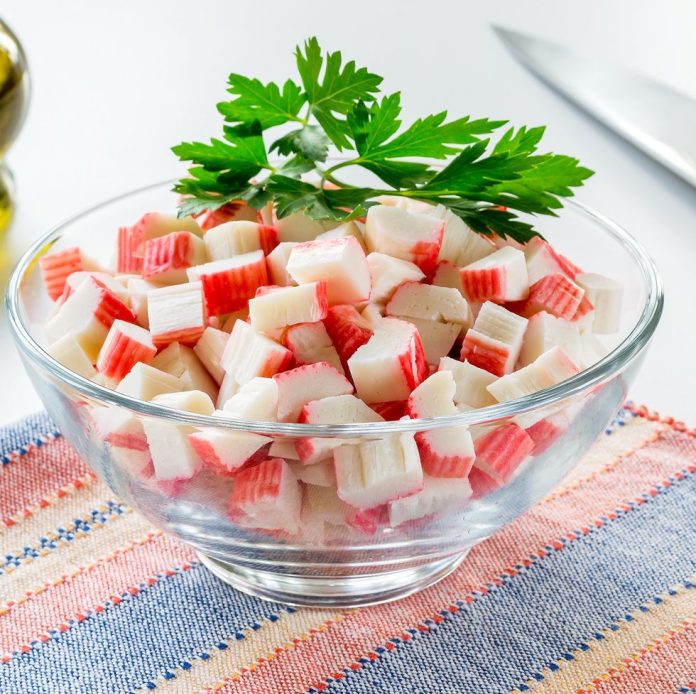Lovers of California rolls, seafood subs, and seafood salads may be surprised to learn that the “crab” in these popular foods is not crab at all, but imitation crab (also known as crab, crab sticks, crab-flavored seafood, surimi, or fish paste). Basically, if you want to eat legitimate crab, the menu and ingredient labels simply mention this. The price is also a sign of this, as imitation crab is often about one-third the price of real crab meat, making it a popular and affordable alternative to the real thing.
What is imitation crab?
Imitation crab is made from fish paste. The fish is deboned, cleaned and washed to remove fat and excess debris, and then chopped into a paste. This paste is then mixed with other ingredients, heated, and pressed into a crab meat-like shape.
Imitation crab is made from seafood, but usually contains no crab except for a small amount of crab extract added for flavor.
Cod is mild in color and odor and is usually used to make fish paste. The fish is also used to make fish fingers and other breaded fish products.
Products made from crab may be labeled on the package as “imitation crab,” “crab-flavored seafood,” or “seafood made from minced fish meat,” provided they comply with government labeling regulations. In Japan, seafood made from surimi is often referred to as “kamaboko.
Restaurant menus sometimes label imitation crab as “crabs” to indicate that they are fake.
What are imitation crabs made of?
The main ingredient of imitation crab is surimi, a white fish paste, which was invented more than 900 years ago in Japan. Subsequently, additives were added to surimi in the 1960s, allowing for refrigerated storage, and the industry has become a global surimi industry worth more than $3.2 billion today. Today’s surimi is primarily made from mild white fish such as cod, haddock, and merlucca. Common additives used in surimi include sugar, egg whites, salt, starches (potato, wheat, corn, cassava, etc.), and natural or artificial flavors.
Is eating imitation crab good for you?
Most foods are processed to remove the nutritional value of the original food, and imitation crabs are no different. Both real and imitation crabs are low in calories and fat, but the calories in real crabs come primarily from protein and the calories in imitation crabs come primarily from carbohydrates. Real crab also contains omega-3 fatty acids, vitamin B12, zinc, selenium, and other minerals, and has far more nutritional value than imitation crab, which is often lost during the processing of surimi.
How do imitation crabs taste?
Imitation crab is designed to taste like cooked fresh crab in texture and flavor. The effort to imitate crab extends to the visual aspect as well, which is why the outside of the imitation crab stick is colored red to resemble real cooked crab meat. Although the fatal flaw is that the imitation crab meat has a strong processed taste compared to real crab meat, there is no denying that the imitation crab has the same taste as seafood and is seasoned to resemble crab.










